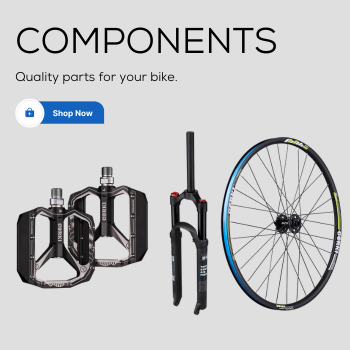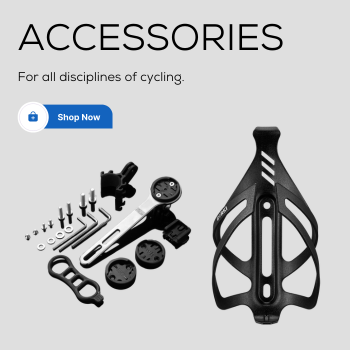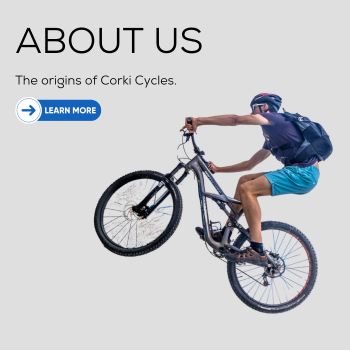
Hey there, fellow riders and road bike enthusiasts! If you're like me, you understand the undeniable thrill of cruising down smooth, open roads on your trusty two-wheeled companion. Whether it's the satisfaction of a challenging climb or the adrenaline rush of racing, our road bikes are more than just machines. They're our partners in adventure.
But here's the thing – while our road bikes are fantastic, there's always room for improvement.
In this post, we will explore a range of must-have components for enhanced riding performance.
Are you ready to unlock the full potential of your road bike? Please fasten your helmet and clip it into your pedals. Let's ride into the world of road bike upgrades!
What are the components of a road bike?
When it comes to upgrading your road bike, it's crucial to understand the essentials. These components form the backbone of your bike. And improving them can profoundly impact your overall riding experience. From the frame to the pedals, every part contributes to the bike's performance and comfort.
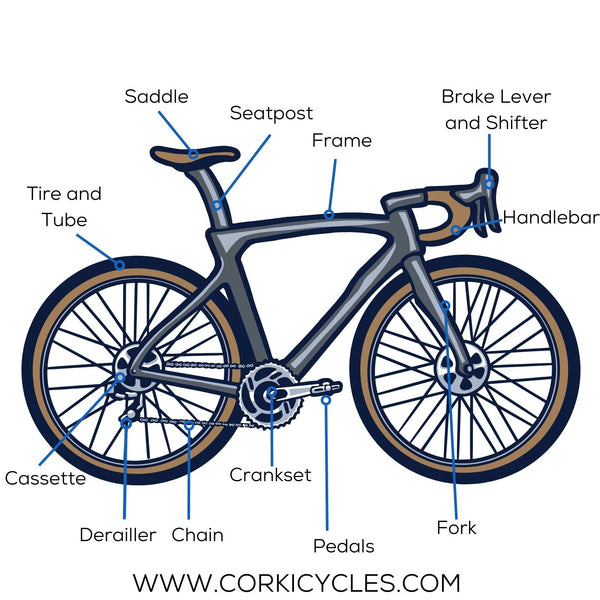
What components should I upgrade on my road bike?
Upgrading your road bike isn't just about fixing what's broken but elevating the entire riding experience. From the frame to the road, we're about to explore the game-changers that will leave you itching to hop on your bike and embrace the open road.
Handlebar Tape
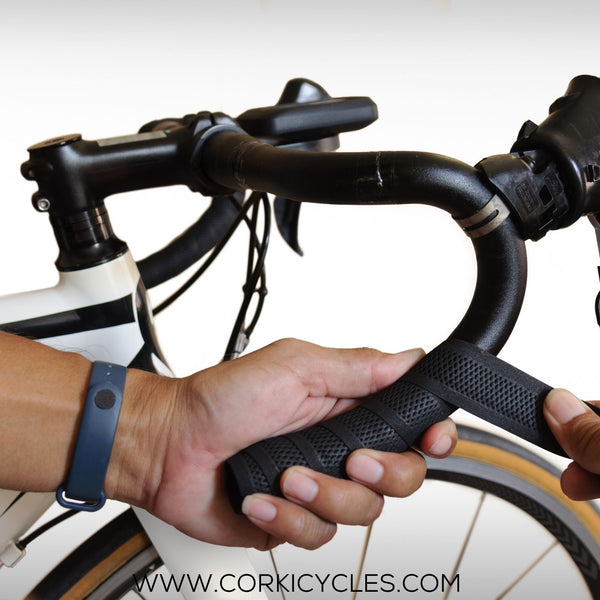
Handlebar tape, often referred to as bar tape or handlebar wrap, is a product that is used to cover the handlebars of your road bike. It provides extra grip and added comfort. Road bikes and commuter bikes are the most common examples of where you might see handlebar tape. But you can apply it to any bike as you see fit.
Apart from comfort and control, replacing old bar tape with new tape is an affordable method to personalize your bike or give it a fresh look. Furthermore, in terms of inexpensive upgrades for road bikes. Getting a new roll of tape is one of the simplest ways to revitalize your cycling experience.
How do you choose the perfect bar tape? Prioritizing shock absorption and cushioning is crucial. Because they have the most significant impact on ensuring your hands stay comfortable. Material choice can also affect grip when riding in the wet, and durability too.
Upgrading your bar tape is a practical way to enhance your biking experience. It's not just a matter of aesthetics; it's about safety, comfort, and personalization. When you're in the saddle for hours, you'll appreciate the difference that quality handlebar tape can make.
Handlebar
Handlebars are where you maintain a connection with your bike. They may not be the most prominent components of your road bike. But they can make a significant difference in your comfort and control.
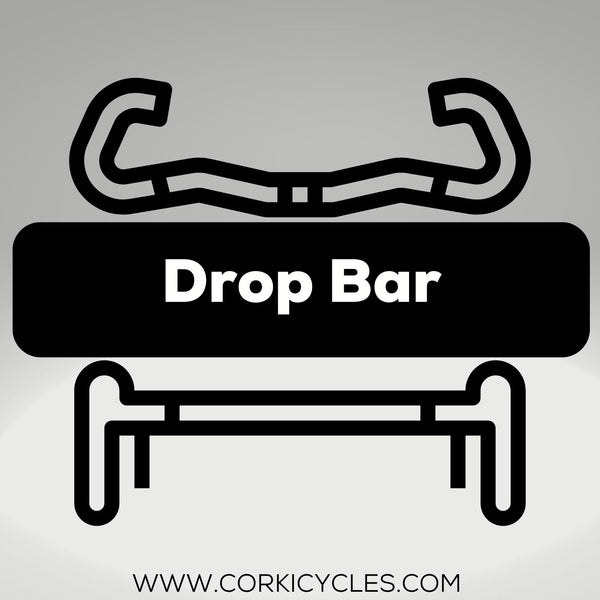
Handlebars come in different sizes, widths, shapes, and materials, so choosing the right one can be tricky.
Road bikes typically have a drop bar of a flared drop bar. It allows you to put your hands in multiple positions, raising or lowering the angle of your torso while riding.
If you want to save weight and improve the ride quality, a carbon fiber handlebar might be a good choice. Another popular choice is the aero handlebar with internal cable routing. It can reduce your drag.
There are many different shapes available in the market. We recommend you choose a bar depending on your riding style, goals, and personal comfort preferences. If you have wide shoulders, you should factor this in, too, as ensuring comfort will help elevate your riding experience.
Saddle
For avid road cyclists, saddle comfort can make or break a ride. Long hours in the saddle require a supportive and comfortable perch. If you're uncomfortable on the saddle and you find your back sore, then it's time to whip that saddle off and try another one.

Choosing the right saddle is personal, as what works for one rider may not work for another.
The type of saddle you need can depend on your riding style. If you want to save weight on your road bike, choose a long, lean saddle without much padding. Some saddles, meanwhile, are designed for your riding position. If you have an aggressive, low handlebar position (common in racing bikes), you may prefer a saddle with a flatter profile. You might like a slightly wider and more cushioned saddle if you have a more upright riding position.
Seatpost
The seat post is a vertical tube that connects the saddle (bike seat) to the road bike's frame. It allows the rider to adjust the saddle's height.
Seatposts come in various diameters and lengths. Typical diameters are 27.2mm, 30.9mm, and 31.6mm, among others. It depends on your bike's frame size and the desired saddle height. Furthermore, the seat posts' flex degree is different to protect your backside from jolts and vibrations.
Some seat posts also have spring designs. It can absorb shocks and vibrations, enhancing rider comfort and making it popular for gravel and endurance riding.
A lighter and more comfortable carbon seatpost is an intelligent upgrade at a reasonable cost.
Brakes
Safety and control are important when you're out on the road. And your bike's braking system plays a critical role. Upgrading your brakes can instill the confidence you need for any ride. Not only are better brakes more responsive, but they can also help make you faster.
There are two primary types of road bike brakes: disc brakes and rim brakes/c-brakes. Disc brakes offer superior stopping power, especially in wet conditions. It is an excellent choice for safety-conscious riders. Rim brakes, on the other hand, are lightweight and easier to maintain.
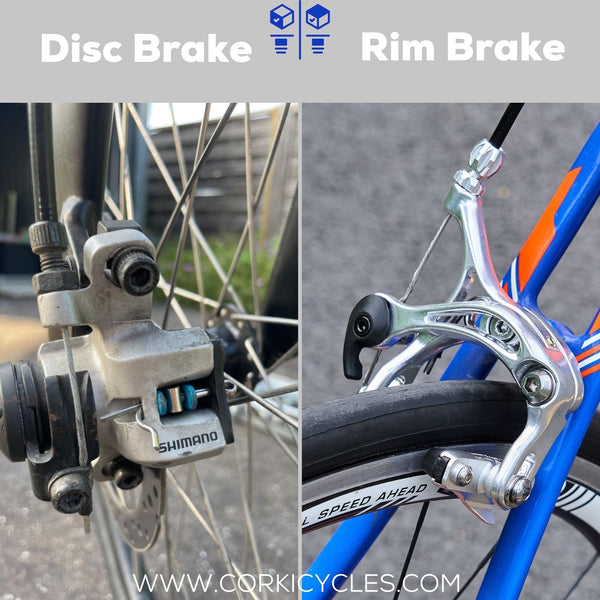
Your choice between disc brakes and rim brakes largely depends on your riding style, conditions, and goal. Disc brakes are becoming increasingly popular for their improved performance and versatility, particularly in gravel and road biking nowadays. However, rim brakes are still found on many bikes. It remains a reliable choice for some riders, especially those who prioritize tradition.
But the least expensive way for your bicycle's brake system is to replace the brake pads. You can replace old brake pads with new ones to reduce update costs.
Pedals
Pedals may seem like a small detail, but they play a pivotal role in your road biking experience. Whether you like pedals that stick to your shoes or pedals that are free and easy, picking the right ones can make your road bike work much better.
When you pick pedals, you need to decide which pedals you want.
Clipless pedals (meaning your shoes must have cleats that clip into the pedals). Flats pedals (meaning your pedals don't require you to wear special bike shoes that clip into them).
Clipless Pedals: These pedals allow you to clip your cycling shoes directly to them. They provide a secure connection between your feet and pedals. It offers excellent power transfer and efficiency. This setup is favored by many road cyclists for its performance benefits. Clipless pedal categories vary, but three-hole and SPD are the most common.
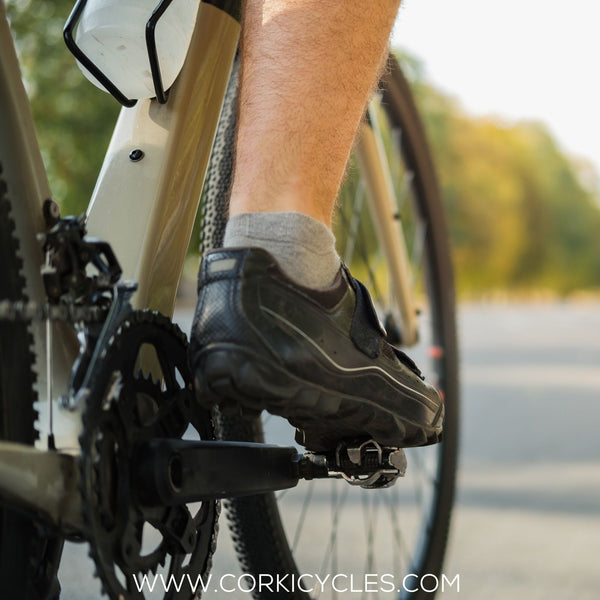
Platform Pedals: Platform pedals are flat and don't require specific cycling shoes. They're popular among urban and recreational riders for their simplicity and convenience. Platform pedals are more relaxed and easy to use with regular footwear.
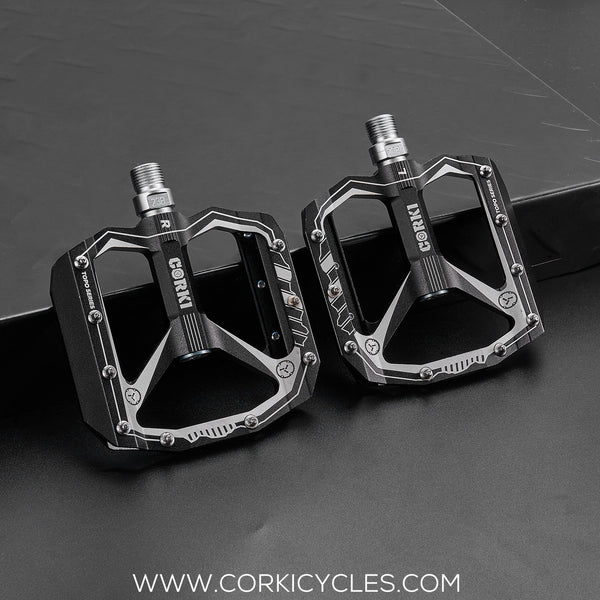
The choice between clipless and platform pedals ultimately comes down to your riding style and personal preference. Clipless pedals are ideal for those who prioritize speed and performance. In contrast, platform pedals offer a more casual and versatile experience.
Tires
Tires are the only point of contact between your bike and the road. If your road bicycle comes with base-level tires, consider replacing one. It can give you less rolling resistance, reduce rotational weight, and improve your overall speed and feel.
Fortunately, tires are one of the least expensive upgrades you can make and often the easiest to install. And while they're all black and round, not all tires are equal.
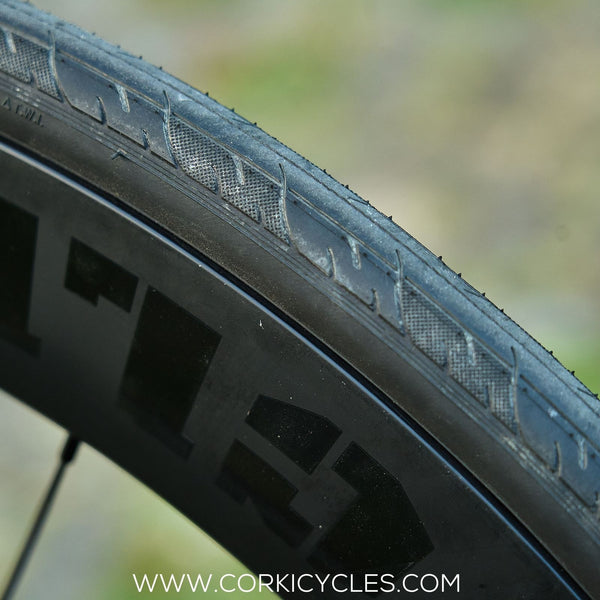
Firstly, different tire widths and pressures can significantly impact your comfort and handling. Wider tires provide a more cushioned ride, while narrower ones can reduce rolling resistance for higher speeds. Many cyclists are opting for wider tires on road bikes and mountain bikes for better traction and a more comfortable ride.
Secondly, tread patterns. The tread pattern on your tires affects your grip on different road surfaces. Consider the terrain you typically ride on and choose a tire with an appropriate tread pattern. This can enhance traction and stability. Road riders mostly choose from tires with little to no tread with wider, knobbier tires built for mixed-terrain rides.
Thirdly, tubeless and tubed tires. Tubeless tires are becoming popular due to their ability. They can resist punctures and offer a more comfortable ride at lower pressures. Tubed tires are the traditional choice and can still provide excellent performance.
Upgrading your tires is an excellent way to tailor your road bike to your specific needs. Look for a quality set of wider tires (25-28mm) for a meaningful boost. But remember to check frame clearance first to figure out how wide of a tire you can run. Wider tires tend to be heavier, so there's a tradeoff between speed and traction.
Wheelset
Road bike wheels are where the rubber meets the road, and this is where the magic begins. Buying a new wheelset might be the most expensive upgrade. However, swapping your stock wheels for a high-quality wheelset can significantly affect your riding preference.
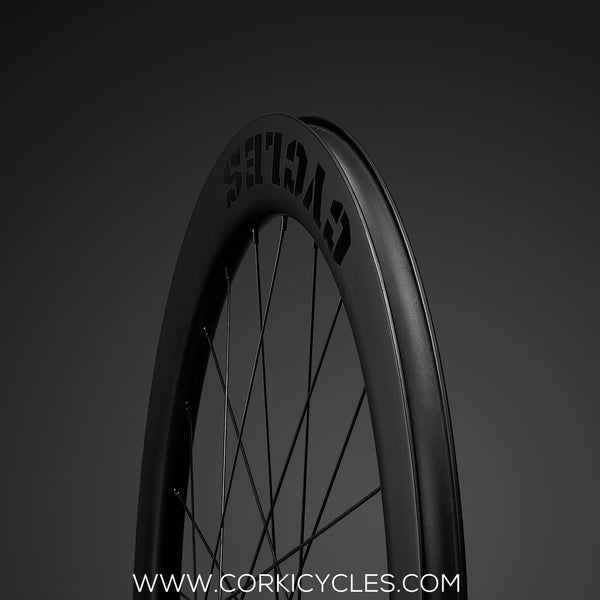
Road bike wheels have three materials: aluminum, carbon fiber, and steel. If you want to improve your riding performance, you can choose a carbon wheelset. It will be more expensive. But lighter than traditional aluminum and has better lateral stiffness. As a result, wheels remain truer over time. Furthermore, more lightweight wheels reduce the bike's overall weight, making climbs easier and accelerations faster.
If you want to know more about road bike wheels, you can read our article " Road Bike Wheelsets: A Comprehensive Guide to Choosing the Right One." It helps you choose the suitable road wheelset.
Conclusion
Congratulations! We've finished the world of road bike upgrades. It uncovers the essential components that can enhance your riding experience. From handlebars to brakes, pedals to tires, we've explored how these upgrades can unlock the full potential of your trusty two-wheeled companion.
So, what are you waiting for? Saddle up and feel the handlebars beneath your palms. Happy cycling!
If you have any comments or questions, please leave them below.

